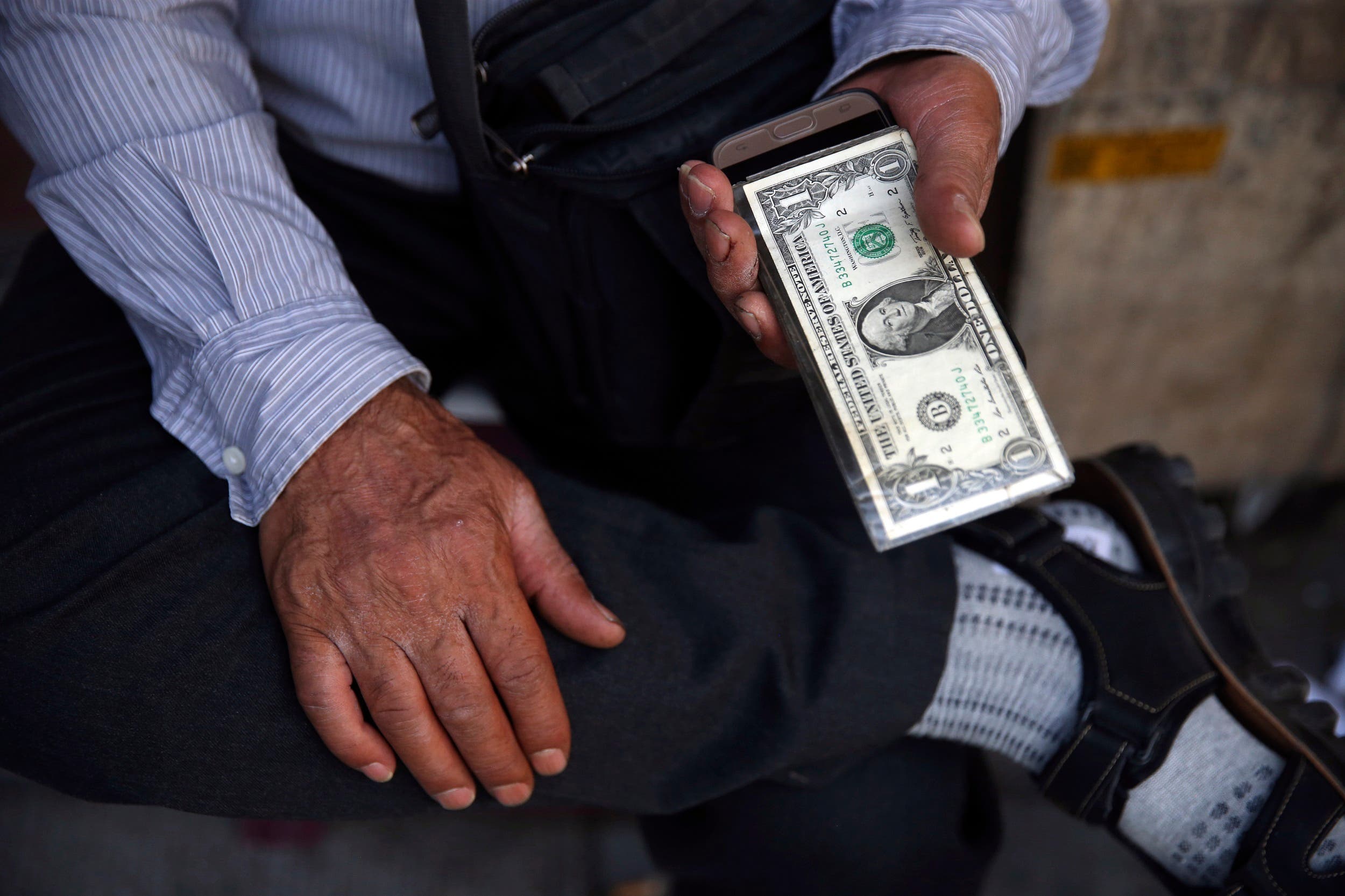The Iranian regime is facing a major challenge as the first round of new US sanctions come into effect on Monday.
Considering the fact that the regime and the Revolutionary Guards (IRGC) control much of what is left of the county’s crumbling economy, major losses await Tehran as this round of sanctions target the regime’s automobile industry, gold and precious metal trade, along with other sectors.
This is considered a prelude to the second round of sanctions, due on November 4, aimed at the regime’s crucial energy sector and Central Bank.
With demonstrations escalating across Iran and protesters overcoming their fears in the face of state authorities and security forces, the ruling regime stands before a monumental crisis of how to contain two very serious domestic and foreign calamities.
Deep impact
US President Donald Trump withdrew his country from the Iran nuclear deal on May 8th, re-imposing all sanctions lifted under the 2015 accord due to the pact’s high flaws, including Tehran’s pursuit of “destabilizing and malign activities” that Washington and its allies oppose.
This first round of US sanctions returning will levy complete bans and severe restrictions on the Iranian regime, including:
“Sanctions on the purchase or acquisition of US dollar banknotes by the Government of Iran; sanctions on Iran’s trade in gold or precious metals; sanctions on the direct or indirect sale, supply, or transfer to or from Iran of graphite, raw, or semi-finished metals such as aluminum and steel, coal, and software for integrating industrial processes; sanctions on significant transactions related to the purchase or sale of Iranian rials, or the maintenance of significant funds or accounts outside the territory of Iran denominated in the Iranian rial; sanctions on the purchase, subscription to, or facilitation of the issuance of Iranian sovereign debt; sanctions on Iran’s automotive sector.”
The US will also be banning any import of rugs and food items from include, such as pistachios, and will refuse to export commercial planes, spare parts and related services to Iran.
Early results
On the other hand, the Trump administration also provided 90 days for US multinational companies to end their trades with Iran. Many firms such as Boeing, General Electric, Maersk, Peugot, Siemens and Total have ended their business initiatives in Iran. Over 50 international entities and firms are committed to leaving Tehran, according to the Trump administration.
Furthermore, the Trump administration is emphasizing there will be no doubt in punishing American and foreign-based companies choosing to not abide by new sanctions imposed on Iran. In June, US State and Treasury officials met with their European and Asian counterparts in this regard to further explain the policy behind new US sanctions.

Inside Iran
Already suffering from corruption and mismanagement, the Iranian economy is on a nosedive since Trump withdrew from the Iran nuclear deal. Reports indicate the country’s currency, the rial, plunged to as low as 126,000 to the US dollar and has failed to regain above the 100,000 mark.
In the past year, the rial has lost more than 80 percent of its value. There are even rumors that the regime itself directed this plunge until August 6th and intends to make some changes after new US sanctions are implemented.
In the past week Iran’s cities have been scenes of a new round of anti-regime protests, including Tehran, Mashhad, Shiraz, Isfahan, Karaj and many more. Protesters begin by rallying against poor economic conditions, yet their slogans quickly take on a political tone targeting senior Iranian regime officials.
This new wave of nationwide protests prove the country’s December/January uprising never faded. We witnessed how that wave continued in Kazerun, Isfahan’s farmers, Khorramshahr, Borazjan, the nationwide truckers’ strike and bazaar merchants in Tehran.
Trump’s firm policy
The Iranian people very much welcome Trump’s firm policy vis-à-vis Iran’s regime, after suffering extremely for eight years under Barack Obama’s appeasement. The results were atrocious both inside Iran and throughout the region.
What makes this ongoing wave of protests all the more interesting is how senior Iranian regime officials are signaling the very source of their concerns, being the network inside Iran associated directly to the opposition People’s Mojahedin Organization of Iran (PMOI/MEK).
Ahmad Salek, the representative of Iranian Supreme Leader Ali Khamenei in Isfahan, home to some of the main protests recently, made very telling remarks. “The slogans heard are being planned by the [PMOI/MEK] through foreign media,” he said to the Tasnim news agency, associated to the IRGC Quds Force.
Looking forward
Iran’s regime is clearly facing a major impasse, especially as Trump is offering negotiations while US Secretary of State Mike Pompeo’s 12 conditions aiming to make Iran a “normal” country.
Those familiar with Iran’s regime know perfectly well this system lacks the capacity to comply with the very logical demands raised by Pompeo. Iran’s regime is showing no signs of surrender to the Trump administration’s demands, knowing any acknowledging of such a platform will spell major concessions on its part.
Tehran cannot take Pyongyang as an example. North Korea had nuclear weapons and the long range ballistic missiles to deliver on its threat. Tehran is in no position.
Adding insult to injury for Tehran is the fact that Iran protests are being directed by an organized exiled opposition, enriching the impact of this unrest and weakening the very pillars of its rule.
Leave a Reply